- Home
- Zadie Smith
Feel Free Page 34
Feel Free Read online
Page 34
By the time of the Rothko Chapel (he killed himself before its unveiling), the strata have emptied out—not only of forms, but of color, too. With those black-on-black, death-dealing rectangles (he found them a “torment” to produce), Rothko was explicitly aiming for “something you don’t want to look at.” Which is one way of accounting for their emotional power: like a memento mori, they lead us to an intolerable, yet necessary, place.
Rothko wanted us deeply affected by the thing we don’t want to look at. But there exists another solution to our tendency toward illusion: affectlessness. Make the viewer feel like a corpse. For when images proliferate among themselves, as if running mechanically with no human involvement, the viewer will find he lacks a natural point of entry. Simulacra seem to run without us, as the world will continue to run without us, once we are gone. Meanwhile, the idea of the artist—and the viewer—as human subjects, capable of deep feeling, of “torment,” grows obscure.
Art that plays with the idea of mechanical reproduction—the obvious example is the work of Andy Warhol—teaches us something of what it would be like to be a thing, an object. Warhol was also, not coincidentally, an enthusiastic proponent of corpse art, his Death in America series being strewn with dead bodies, all of which are presented with no whiff of human pity—although neither are they quite cold abstractions. On one level, the level at which they are most often celebrated, Warhol’s corpses make you feel nothing. And yet your awareness of your own emptiness is exactly what proves traumatic about them. “How can I be looking at this terrible thing and feeling nothing?” is the quintessential Warholian sensation and it’s had a very long afterlife. Uncomfortably numb: that’s still the non-emotion that so many young artists, across all media, are gunning for.
Thinking of Warhol and corpses, it’s odd (to me) that I met—for the first time—the critic Hal Foster, on that September night, for it was a dinner at his apartment I was coming from. It’s almost twenty years ago now that he wrote of the Warhol effect in The Return of the Real:
[T]he famous motto of the Warholian persona: “I want to be a machine.” Usually this statement is taken to confirm the blankness of artist and art alike, but it may point less to a blank subject than to a shocked one, who takes on the nature of what shocks him as a mimetic defense against this shock: I am a machine too, I make (or consume) serial product-images too, I give as good (or as bad) as I get . . . If you can’t beat it, Warhol suggests, join it.
There Foster is defining something called “traumatic realism,” leaning on a Lacanian definition of trauma as “a missed encounter with the real.” We mechanically repeat the trauma to obscure and control the reality of the trauma, but in doing so reproduce, obliquely, some element of it. The real pokes through anyway, in the process of repetition. One of his examples—Warhol’s White Burning Car III—has echoes of the Signorelli. Here is a corpse—thrown from a burning car and hanging upon a climbing spike on a utility pole—and here is a live man, strolling by, heading out of the frame. It’s an appropriation of a tabloid image, originally published in Newsweek.
On the one hand, as with the Signorelli, I am viewing the abject, unthinkable thing (myself as a corpse), and this, for me—and for Andy—is a way of dominating and controlling the trauma (of this idea). The silk screen screens the truth from me. But not entirely. A Warhol image, as Foster brilliantly argues, just keeps coming at you, partly hiding the real from you but also repeating and reproducing it unbearably. The repetition of the image—an unstable tower, three reps stacked beside two—proves key. Somewhere along the line, the sequence begins to morph. Thank God it wasn’t me starts becoming (perhaps in that final blank space) Oh Christ it will be me.*
This anxious double consciousness—it’s not me/it will be me—may be part of the price we pay for living with, and around, machines. Whenever we enter a moving vehicle, for example, or a plane, haven’t we always, already, in our minds, crashed and become corpses? Even before receiving our salty pretzels we see ourselves screaming and praying, falling through the sky, incinerated. And if we’re in that Warholian moment, everything else is false advertising. That’s another ongoing attraction of Warhol: whenever it’s strongly implied that we are going to live forever (almost every ad, TV show, and magazine—in-flight or otherwise—does this) we can think of Andy (who used the commercial language of these mediums) and know, deep in our naked selves, that it isn’t true.
Meanwhile the replication of nature at its most beautiful—beloved technique of Italian masterpieces—is the art best suited to sentimental humanism, allowing, as it does, the viewing subject to feel pity and empathy; to weep for all the beautiful people who have become or will become corpses (excluding me). Which is a response I would never entirely forsake, not for a half-dozen burning white cars. To look into the tender, unformed face of Titian’s Ranuccio Farnese—twelve-year-old scion of the ancient Italian clan—and see a boy whose destiny it was to become a corpse! And this despite his red doublet’s intricate embroidery, the adult sword hung about his narrow hips, the heavy weight of inheritance suggested by that cloak his father surely insisted he wear . . . All the signs of indelible individuality are here, yet none proved sufficient to halt the inevitable. (No amount of “selfies” will do it, either.)
Is my horror of corpses coeval with the discovery that I’m a time-bound “individual”? Before we were mere bodily envelopes, containing souls for a while, before these souls embarked on their journeys toward the infinite. In a culture that gives credence to eternal consciousness, corpses remain disgusting but aren’t, in themselves, “tragic.” The modern “trick” of portraiture—the arresting of a “single” moment in an individual life (made so much more poignant here, on the edge of adulthood)—may be an aesthetic illusion, but at least it helps remind us of what a large “event” a human life truly is, of how much is lost when corpsification occurs. We may be forever corpses—but once we were alive! It was the old masters that taught us the emotional power of individual representation. (And five hundred years later, space is still reserved in our newspapers for recent corpses—if they are one of “ours”—the dead furnished with stories as precise and elaborate as the Farnese embroidery.)
Of course, we learned our attitudes toward human suffering from them, too. Auden’s famous words fit Warhol’s burning car as snugly as they do Bruegel’s Landscape with the Fall of Icarus or Piero’s Flagellation of Christ:
[. . .] how well they understood
Its human position; how it takes place
While someone else is eating or opening a window
or just walking dully along;
But do all old masters do this equally well? The sheer technical skill, the perfected illusion, can sometimes be a block between (this) viewer and the useful emotion she is seeking. There are many beguiling Italian masterpieces. There are also moments when you have to remind yourself that the stable relationship they tend to configure, between me the subject and the painting object (which I am contemplating as if it spoke of a truth that did not include me) is, in the final analysis, a gorgeous illusion.
The Signorelli, by contrast, stops you in your tracks. It has the gift of implication. It creates a triangular and unstable relationship—between you, the corpse and the “someone else.” Looking at it, I am not a woman looking at a man carrying a corpse. I am that corpse. (Even if this is an idea I entertain for only a few seconds, preferring to be the “someone else.”) And I will be that corpse for infinitely longer than I have ever been an individual woman with feelings and ideas and arms and legs, who sometimes looks at paintings. It’s not me. But it will be me.
2.
Earlier, at Hal Foster’s, we’d talked of Karl Ove Knausgård, the Norwegian author of a six-volume novel (or memoir?) called My Struggle (two volumes of which have been translated thus far). Everywhere I’ve gone this past year the talk, among bookish people, has been of this Norwegian. The first volume, A Death in the Family, m
inutely records the perfectly banal existence of “Karl Ove,” his unremarkable childhood, his troubles with girls, his adolescent attempts to buy beer for a New Year’s Eve party (almost one hundred pages of that), and the death of his father.
The second, A Man in Love, renders a marriage in as much detail as any human can bear:
What was going through her head?
Oh, I knew. She was all alone with Vanja during the day, from when I went to my office until I returned, she felt lonely, and she had been looking forward so much to these two weeks. Some quiet days with her little family gathered round her, that was what she had been looking forward to. I, for my part, never looked forward to anything except the moment the office door closed behind me and I was alone and able to write.
As a whole these volumes work not by synecdoche or metaphor, beauty or drama, or even storytelling. What’s notable is Karl Ove’s ability, rare these days, to be fully present in and mindful of his own existence. Every detail is put down without apparent vanity or decoration, as if the writing and the living are happening simultaneously. There shouldn’t be anything remarkable about any of it except for the fact that it immerses you totally. You live his life with him.
Talking about him over dinner—like groupies discussing their favorite band—I discovered that although most people felt as strongly about their time spent under Karl Ove’s skin as I had, we had a dissenter. An objection on the principle of boredom, which you sense Knausgård himself would not deny. Like Warhol, he makes no attempt to be interesting. But it’s not the same kind of boredom Warhol celebrated, not that clean kind which, as Andy had it, makes “the meaning go away,” leaving you so much “better and emptier.” Knausgård’s boredom is baroque. It has many elaborations: the boredom of children’s parties, of buying beers, of being married, writing, being oneself, dealing with one’s family. It’s a cathedral of boredom. And when you enter it, it looks a lot like the one you yourself are living in. (Especially true if, like Karl Ove, you happen to be a married writer. Such people are susceptible to the peculiar charms of Karl Ove.) It’s a book that recognizes the tedious struggle of our daily lives and yet considers it nothing less than a tragedy that these lives, filled as they are not only with boredom but with fjords and cigarettes and works by Dürer, must all end in total annihilation.
But nothing happens! our dissenter cried. Still, a life filled with practically nothing, if you are fully present in and mindful of it, can be a beautiful struggle. In America we are perhaps more accustomed to art that enacts the boredom of life with a side order of that (by now) overfamiliar Warholian nihilism. I think of the similar-but-different maximalist narratives of the young writer Tao Lin, whose most recent novel, Taipei, is likewise committed to the blow-by-blow re-creation of everyday existence. That book—though occasionally unbearable to me as I read it—had, by the time I’d finished it, a cumulative effect, similar to the Knausgård.
Both exhaustively document a life: you don’t simply “identify” with the character, effectively you “become” them. A narrative claustrophobia is at work, with no distance permitted between reader and protagonist. And if living with Tao Lin’s Paul feels somewhat more relentless than living with Karl Ove, there is an element of geographical and historical luck in play: after all, Karl Ove has the built-in sublimity of fjords to console him, whereas Paul can claim only downtown Manhattan (with excursions to Brooklyn and, briefly, Taipei), the Internet and a sackload of prescription drugs.
Lin’s work can be confounding, but isn’t it a bit perverse to be angry at artists who deliver back to us the local details of our local reality? What’s intolerable in Taipei is not the sentences (which are rather fine), it’s the life Paul makes us live with him as we read. Both Lin and Knausgård eschew the solutions of minimalism and abstraction in interesting ways, opting instead for full immersion. Come with me, they seem to say, come into this life. If you can’t beat us, join us, here, in the real. It might not be pretty—but this is life.
Would the premature corpsification of others concern us more if we were mindful of what it is to be a living human? That question is, for the sentimental humanist, the point at which aesthetics sidles up to politics. (If you believe they meet at all. Many people don’t.) Concern over the premature corpsification of various types of beings—the poor, women, people of color, homosexuals, animals—although consecrated in the legal sphere, usually emerges in the imaginary realm. First we become mindful—then we begin to mind. Of our mindlessness, meanwhile, we hear a lot these days; it’s an accusation we constantly throw at each other and at ourselves. It’s claimed that Americans viewed twelve times as many Web pages about Miley Cyrus as about the gas attack in Syria. I read plenty about Miley Cyrus, on my iPhone, late at night. And you wake up and you hate yourself. My “struggle”! The overweening absurdity of Karl Ove’s title is a bad joke that keeps coming back to you as you try to construct a life worthy of an adult. How to be more present, more mindful? Of ourselves, of others? For others?
You need to build an ability to just be yourself and not be doing something. That’s what the phones are taking away, the ability to just sit there . . . That’s being a person . . . Because underneath everything in your life there is that thing, that empty—forever empty.
That’s the comedian Louis C. K., practicing his comedy-cum-art-cum-philosophy, reminding us that we’ll all one day become corpses. His aim, in that skit, was to rid us of our smartphones, or at least get us to use the damn things a little less (“You never feel completely sad or completely happy, you just feel kinda satisfied with your products, and then you die”), and it went viral, and many people smiled sadly at it and thought how correct it was and how everybody (except them) should really maybe switch off their smartphones, and spend more time with live people offline because everybody (except them) was really going to die one day, and be dead forever, and shouldn’t a person live—truly live, a real life—while they’re alive?
MEET JUSTIN BIEBER!
I’m not on Twitter but quite often I find myself thinking of Justin Bieber. It’s not a sexual interest—at least, I don’t think it is. It’s more of a—bear with me—philosophical interest. I used to have a similar preoccupation with the teenage Michael Jackson. Basically: what’s it like to be such a person? What does it feel like? Does it still feel like being a person? If you met Justin Bieber, would he be able to tell you?
When thinking about Bieber I like to envision him at a corporate meet-and-greet, organized by his record company. Passing two days in an empty stadium, positioned in front of the logo of the local radio station, experiencing himself as the sole and obsessive focus of an unending line of teenagers. Meeting and greeting, glad-handing and nodding, accepting professions of love from complete strangers: each one apparently sincere, each one essentially the same. With a fixed smile on his face he listens as they say the magic words, over and over: “I can’t believe I’m meeting Justin Bieber!” As if he were not a person at all, but a mountain range they had just climbed. This is Justin Bieber, the “love object.” The idea of the love object: this is what interests me. It’s a condition to which many people aspire, now more than ever. You can see why: so much love flows toward the love object. Why would we aspire to be doctors or teachers when we have before us the model of the love object? To walk into the world and meet love, from everyone, everywhere—this is a rational dream. By contrast, most of us enter the world and cannot be sure what we will meet: perhaps resistance, perhaps indifference, perhaps contempt. The moment of meeting is always unsure, fraught. But for the love object there is a smooth certainty to all encounters. This is because all meetings with others have in one sense always already happened, for the love object is already known and loved everywhere. He meets only those who feel they have already met him, and already love him. Everyone Bieber meets is a Belieber.
And yet—having watched this process so many times—we, the public, know perfectly well that the love object
is, more often than not, a tragic figure. The love object “lives the dream” (the dream that everybody you meet says: “I love you!”) until the dream becomes nightmare. Then the moment arrives when the love object himself no longer wants to meet anyone. (Sometimes the aura surrounding the love object fades first, but the result is the same.) The love object withdraws. He is rarely seen in public and when he is, strange things happen. What meetings he does have all seem to go awry: people get punched, phones are stolen, babies are dangled out of windows, drugs taken, cars crashed. His closest advisers begin to fear for him. He is urged into many new and alarming kinds of meetings, with therapists, drug counselor, nutritionists, accountants. But these meetings seem only to compound the problem: once again he is a kind of object to be analyzed, tweaked, examined. His advisers despair. Is there nobody he could meet who could help?
• • •
Imagine a meeting: between Justin Bieber, global pop star, and Martin Buber, long-dead Jewish philosopher. I know, I know. But in my mind these two are destined to meet.* Buber had a lot to say about meeting-and-greeting, after all, although it’s true that by “meeting” Buber intended something more than a hug, a flashed peace-sign and a photo. He believed that to really meet someone involved entering an intimate, complex and precious state, a state we achieve only rarely. “All real living is meeting,” he claimed. But by Buber’s stringent measure not only does the Belieber in the signing queue never really meet Justin Bieber, most people rarely—if ever—meet their closest friends, mothers don’t always meet their children, and many a husband has never met his wife, though he may sleep next to her every night. These and other peculiar ideas can be drawn from Buber’s famous 1923 essay, I and Thou, a quasi-mystical work that asks what it really means to “meet” another person in this world. Here is the opening premise, deceptively simple:

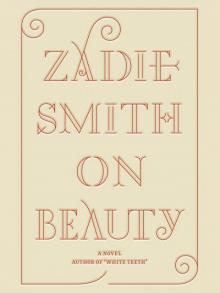 On Beauty
On Beauty Nw
Nw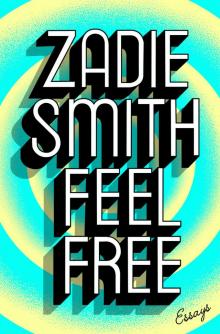 Feel Free: Essays
Feel Free: Essays The Book of Other People
The Book of Other People White Teeth
White Teeth Changing My Mind: Occasional Essays
Changing My Mind: Occasional Essays N.W.
N.W. Swing Time
Swing Time The Embassy of Cambodia
The Embassy of Cambodia The Autograph Man
The Autograph Man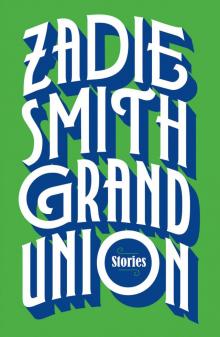 Grand Union
Grand Union Intimations
Intimations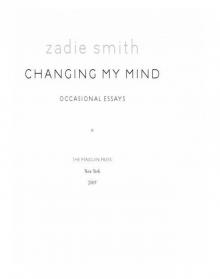 Changing My Mind
Changing My Mind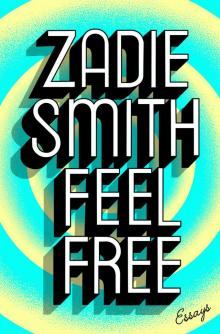 Feel Free
Feel Free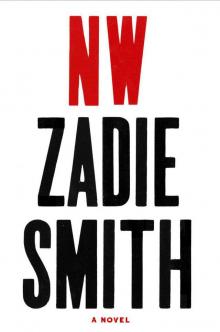 NW: A Novel
NW: A Novel